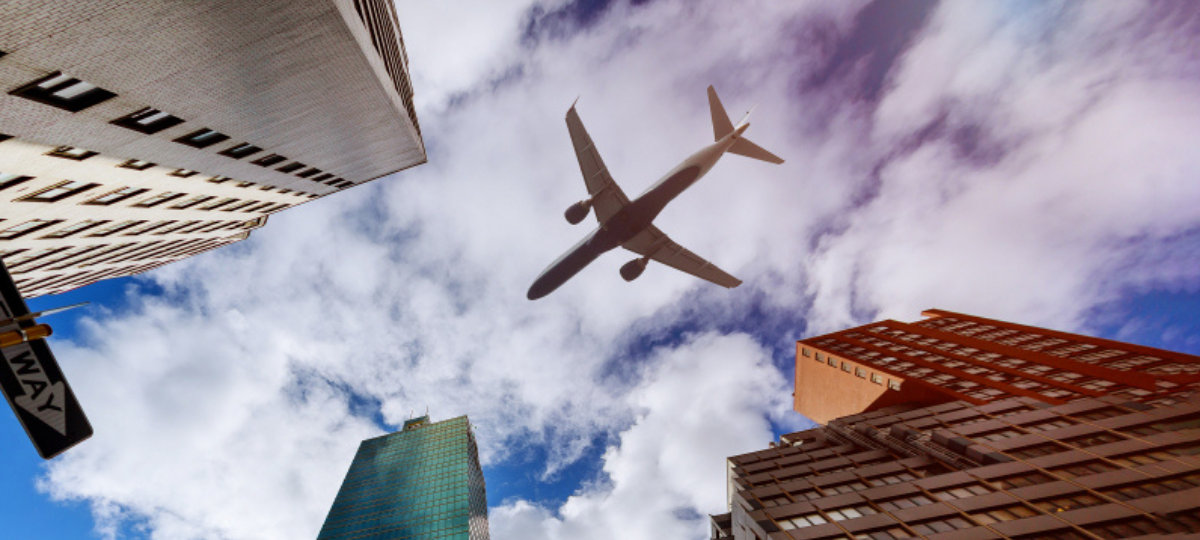IoT for Airlines is Taking Flight: What AI-for-the-Air Experts Say About It

Seat sensors, airflow monitors, sleep trackers, and smart overhead bins are just the tip of the iceberg for the potential that IoT has in airplanes.
From personalization, to faster boarding and take-off, to increased comfort, IoT could streamline and improve flight experiences for attendants, passengers, pilots, and business intelligence analysts alike.
NewtonX recently conducted a B2B survey with executives and business intelligence senior managers from Boeing, Airbus, and dozens of other airlines and manufacturers of airplane seats, overhead bins, and in-flight entertainment systems. The survey revealed how soon in-flight IoT will be in use widely. Additionally, it showed how innovations in the space will pay off. The data and insights in this article are informed by the NewtonX survey.
A Ten-Year Lag Time: Why You Won’t See IoT in Most Airplanes For Several Years
Many in-flight systems remain in use for 10-15 years with little more than maintenance updates. Retrofitting in-flight entertainment, much less overhead bin sensors or seats, is extremely expensive — which is why planes vary so much in terms of amenities (outlets, in-flight entertainment, etc.).
However, IoT sensors and streamlined smart devices are increasingly common on airplanes. For instance, the new Airbus A301 aircrafts use LED lights that are green if the space above in an overhead bin is empty, yellow if something is in the bin but there’s room around it, and red if it’s completely full. This allows passengers and crew members to quickly scan the plane to find an empty bin. While outfitting planes with this system was an investment, the airline expects to save valuable time loading carry-ons and passengers into the plane — which would also save money and improve passenger loyalty.
Manufacturers are making other advances, such as sensors in seats that can predict when parts will break and collect data on use. However, currently they’re only available in some first class cabins and in the very newest planes. Increasingly, these new planes will include sensors in food carts, data on the time it takes to board and offer food service, and even cameras on in-flight entertainment centers for passengers to speak with an attendant without an extra trip down the aisle on either side.
IoT in new planes also simplifies safety assurance. For instance, flight attendants can watch a seat map to see whose seat belt isn’t buckled, what tray tables aren’t up, and which seats are still reclined. Many new planes already have this feature on at least some seats, and early reports say it decreases the time flight attendants spend walking up and down the cabin and improves compliance with the cabin’s safety rules.
The IoT For Airlines Market Is Expected to Skyrocket
Over 92% of airlines believe that IoT will create significant benefits to their passengers and crews. Numerous airlines have already seen positive impact from early IoT additions to planes. For instance, Virgin Atlantic is producing a fleet of Boeing 787 planes and cargo equipment connected via IoT devices that will produce over half a terabyte of data per flight.
This wealth of data, though, will come with inevitable privacy concerns. It’s one thing to automatically assign seats using AI based on past preferences, and another to offer targeted advertising, or even personalized drink suggestions. Early reports of passengers on planes with in-flight entertainment systems that have cameras show that many passengers intentionally cover the camera for fear of spying. (All airlines with screens with cameras say the camera only turns for communication between attendants and passengers. )As IoT increasingly generates robust data on passengers, airlines will need to be careful about the ways in which they collect, analyze and utilize this data.
According to the NewtonX survey, 68% of airlines believe that privacy will be a central issue in the IoT for airlines market. However, these concerns will not stymie growth in the market. The largest airlines in the world believe that integrating IoT with various aspects of flights will improve efficiency, improve the customer and crew experience, and ultimately result in cost-savings and a competitive advantage.
Sign up for our newsletter, NewtonX Insights:
Related Content
The IoT Hospital Makeover: How New Technologies Are Streamlining Healthcare Services
Hospitals have adopted IoT devices across almost every aspect of the patient, doctor, and administrator experience and beyond.
read moreNewtonX Current + Fortune Analytics: What CFOs really think about the future of work
The Covid-19 pandemic has accelerated change across virtually every aspect of our lives. From work life to the economy to emerging technologies to DEI and beyond, we continue to grapple with the journey to back-to-normal.
read moreWhy Microsoft chose NewtonX to develop an innovative new product strategy
Microsoft needed to harness voice of customer insights to guide a successful product launch.
read more